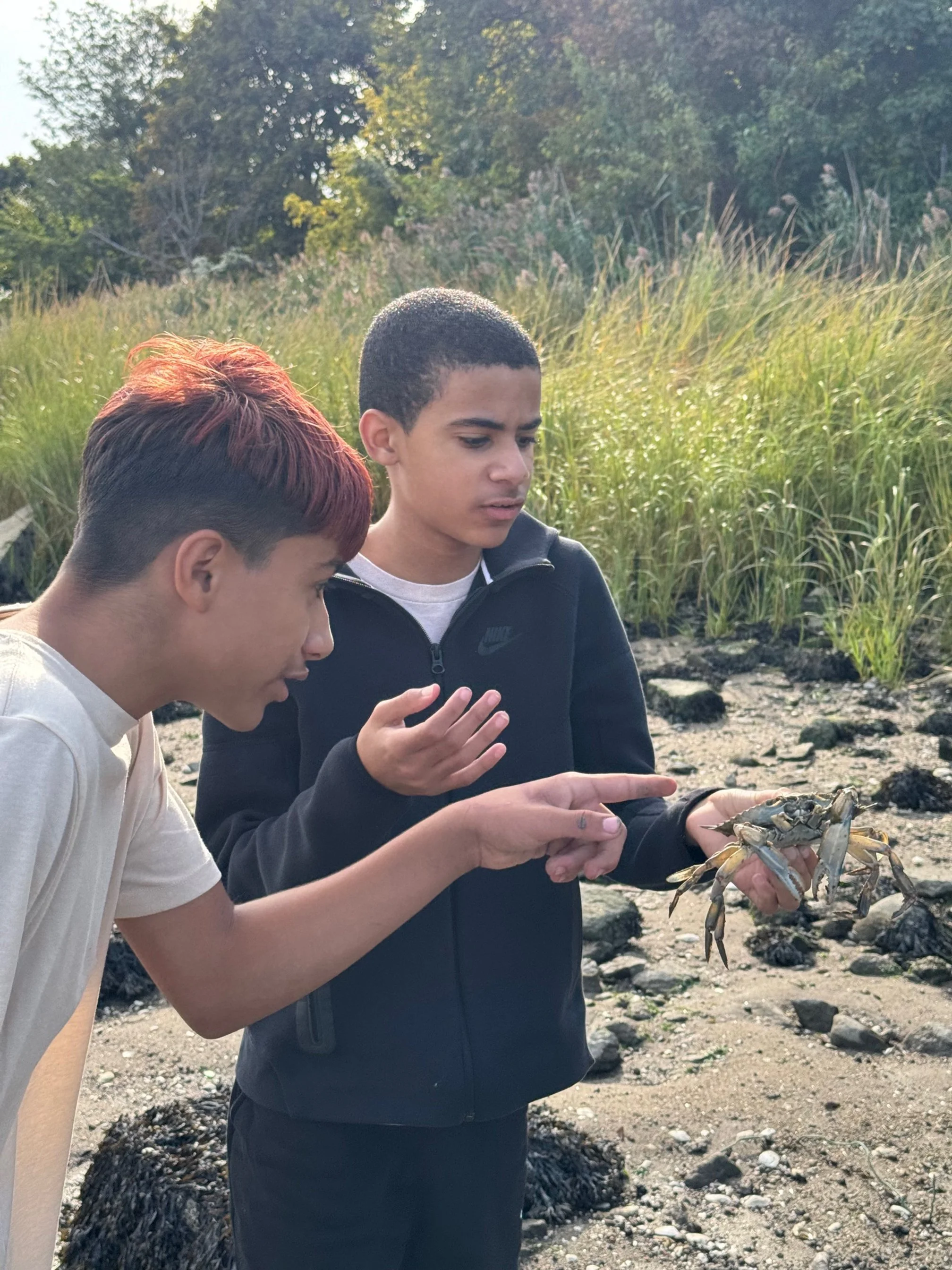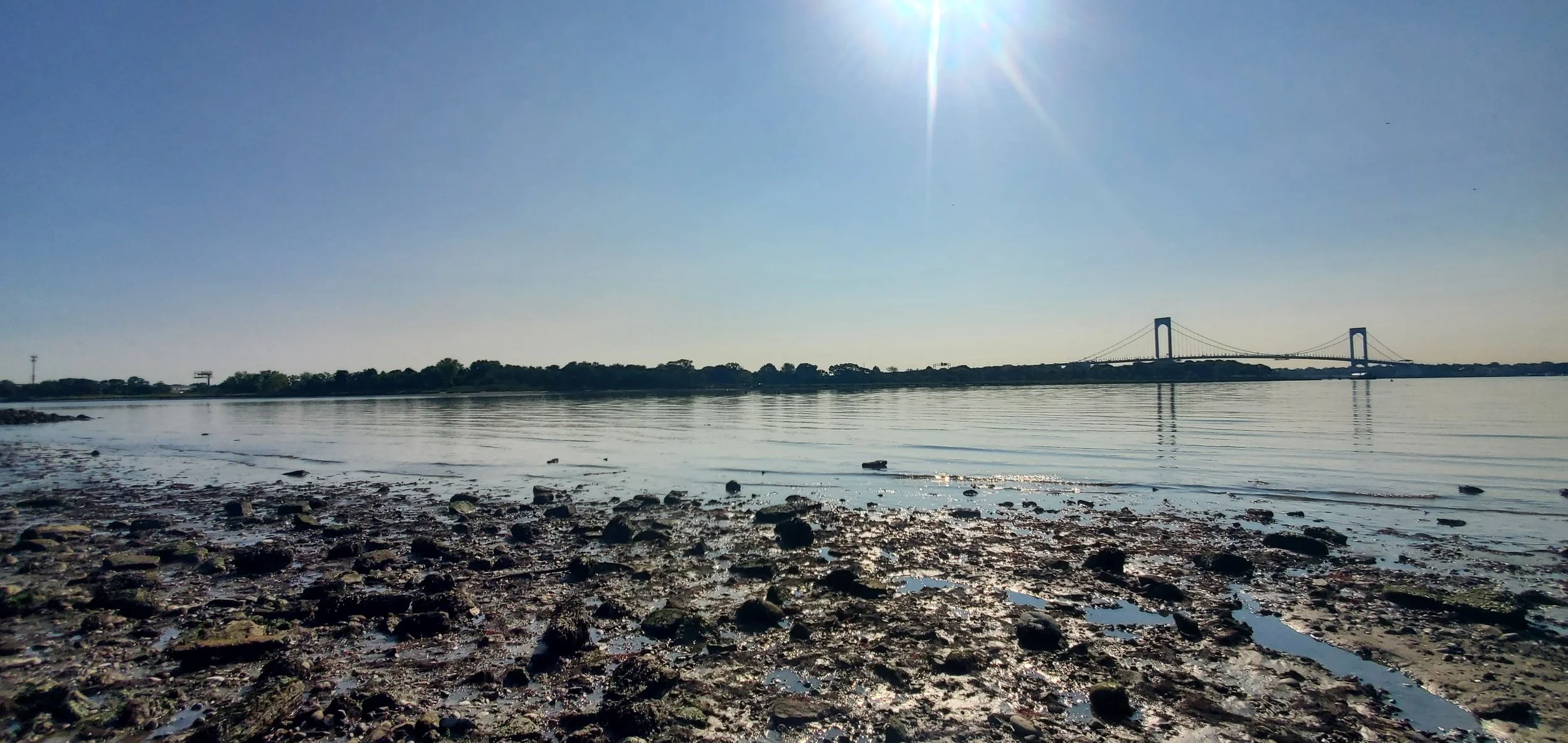Partnering Together for the Western Long Island Sound Coastal Watershed
/Collective & Community-Driven Ecosystem Restoration in Queens & the Bronx
“We’re not just putting oyster reefs in New York Harbor. We’re supporting the restoration of an ecosystem.”
For the last decade our restoration team, along with our partners and the local community, has continued working toward the restoration of functional, self-sustaining oyster reefs in four regions that make up New York Harbor: the Hudson River, the Upper and Lower New York Bay, Jamaica Bay, and Western Long Island Sound. And, to kick off 2025, we are thrilled to share some good news! The data trends and results from multi-year feasibility studies, pilot projects, and collaborative restoration work show that each region's conditions support our multi-acre reef restoration efforts. We know we still have a long way to go, and we are so happy to share that it’s working.
In addition to our scientific expertise, hard-working team, and incredible volunteers, our work is rooted in our community partnerships. We clean up beaches, measure oysters, monitor water quality, learn, ally, advocate, laugh, and eat together, among other things. Part of the pleasure of our work is being out in nature alongside people who care about and voluntarily take care of their part of the New York Harbor. Many came long before us, including our partners at Coastal Preservation Network, Hudson River Foundation, NYC Parks, Save the Sound, and YMCA Castle Hill.
Together, with the generous support of the National Fish and Wildlife Foundation’s Long Island Sound Future Fund (LISFF), our ambassadors, and community scientists, we’ve gathered data at three key locations within the Western Long Island Sound Coastal Watershed: Pugsley Creek (Bronx), Turtle Cove (Bronx), and Powell’s Cove (Queens). After our first phase of data gathering in the fall of 2024, we can now confirm that long-term oyster reef restoration is a strong possibility!
“There’s evidence that our three sites on Western Long Island Sound can support oyster restoration because we already witness the strong presence of wild oysters,” explains Thay-Ling Moya Pérez, our Restoration Project Manager leading the LISFF projects here at Billion Oyster Project. ”
Our big, hairy, audacious, collective goal? To restore functional, self-sustaining oyster populations to New York Harbor, including at these sites in western Long Island Sound. Various data points and direct feedback from local community members and organizations in the Bronx and Northern Queens will inform the design processes and guide the next phase of our multi-acre restoration projects.
Thank you to the many residents and leaders who have shown up for coastal restoration initiatives with us! As Sharlene Brown, Executive Director of Castle Hill YMCA, located right in front of Pugsley Creek, describes it:
“Castle Hill, like most of New York City, is surrounded by water. As a community person, it only makes sense for me to get educated and involved in waterway clean-up. And, what better way to strengthen the YMCA community and future generations than letting them know about and providing access to their environment?”
Here’s a look at some of the work we’ve accomplished so far in our first phase of pre-construction site investigations together with our partners:
Wind Fetch/Wave Analysis: Conducted by our partners at NYC Parks, wave analysis helped us understand how wind and waves behave in these areas, how they can help buffer wave action along the shoreline, and how they could impact our reef structures.
Sediment Characterization: Oysters don’t love mud and they need a hard substrate (surface) to stick to. We looked at the types of sediment present at the bottom of these areas.
“Sand, rock, and hard surfaces are ideal substrates and contribute to the most ideal conditions for oyster restoration,” explains Thay.
Benthic Surveys: We also assessed the various tiny organisms and their quantities on the Harbor’s floor. We took samples of the bottom sediment and sent them to a lab that identified and counted the different species in each sample. The preliminary data will allow us to compare species' presence and abundance before and after reef installation to see if our reefs are positively impacting the ecosystem.
Wild Oyster Surveys: With local volunteers from Save the Sound, Coastal Preservation Network, and the general public, we surveyed the shoreline to see if wild oysters were present at each site. When we found a wild oyster, we measured its size and density (how many are in an area). The presence of wild oysters suggests that the conditions at each site might be suitable for our oyster reefs to survive and that oyster larvae from nearby areas are successfully settling and growing at the site. Luckily we saw a whole lot of them at each of our sites!
Multibeam and Side-Scan Sonar Surveys: We hired marine engineers to scan the cove and creek bottoms at each of our sites to create images that show us how deep the water is and what the landform of the bottom looks like. These scans also helped us see if there were any underwater obstructions like pilings or boat wrecks, as we want to avoid those when selecting sites for our reef structures.
We can’t do any of this in-depth analysis without collective efforts. We are very grateful to have such dedicated partners who are independently committed to their communities and wetlands and offer their expertise and resources to our unified restoration efforts.
“The most beautiful thing, in my opinion, is the local community's involvement, people advocating for their local waterways. I’m passionate about highlighting the community and the stewards who have been doing this work before us and acknowledging their wins and struggles,” shares Thay. “This work also helps bridge gaps to other local communities that have been historically marginalized and that don't have access to the water. I want them to come, experience, and enjoy the Bronx—their home—as this beautiful green place, which it's always been.”
Coastal restoration initiatives in Western Long Island Sound started over two decades ago when staff from New York City Parks and local advocates drew attention to and studied wild oyster populations in the region.
Rebecca Swadek, Director of Wetlands Management at NYC Parks, explains:
“Our objective is to monitor and restore ecosystems, and oysters are a really important historical part of that ecosystem. Wetlands help detain floodwaters, filter water, buffer wave and storm energies, and capture and store carbon.”
NYC Parks first got involved in oyster restoration work in 2008 with partners. They have been restoring wetlands for the last 30 years with over 160 acres of wetlands restored on parkland. They are among our key partners in many of our projects and the landowners of many of our project sites.
“New York City is a city of water. We have over 520 miles of shoreline, which has shaped our history in almost every imaginable way as a city and a community,” says Rebecca. “Our main priorities are to restore wetlands to protect or support wildlife species, like the salt marsh sparrows in Southeast Queens, for example, and to create more public access for local communities to enjoy New York City’s wetlands.”
Save the Sound—working to preserve and improve Long Island Sound's land, air, and water in New York and Connecticut—has served as a core technical partner at our LISFF sites. From collecting benthic water quality samples to participating in wild oyster surveys and engaging communities for their input on our reef design, we rely on their scientific and legal expertise.
“The western narrows of Long Island Sound is a target area for us because it has received the poorest water quality grades and local communities have limited public access to the Sound along its shoreline. Our goal is to increase biodiversity, improve water quality, and create more access to the Long Island Sound in this region,” says Katie Friedman, Director of New York Ecological Restoration Programs for Save the Sound. “We are excited to partner with Billion Oyster Project on oyster restoration efforts in the Bronx and Queens.”
Kathryn Cervino, President of the Coastal Preservation Network, and her husband, Dr. James Cervino, both native and locals of College Point, Queens, have led a dedicated group to restore and protect the coastal environment in Northeast Queens. Together, we collect data across Queens, including conducting wild oyster surveys at Powell’s Cove Park. And they’ve been entirely volunteer-run since starting as a waterfront cleanup at MacNeil Park. From planting seagrasses to restore the coastlines, pushing for a kayak launch at a local park, hosting compost pick-up during the pandemic, or participating in wild oyster surveys, the Coastal Preservation Network is relentless in their commitment to College Point.
“We've been advocates for public access to the waterfront, getting more resources to our coastal parks and education and trying to green the community,” says Kathryn.
After completing site investigations and baseline monitoring this year, we will develop preliminary designs based on the collected data and community feedback. Completion of the site assessments and preliminary designs will lead to a final design which will be submitted as part of a permitting package to regulatory agencies for approval. Once permits are issued, a final implementation phase will result in the fabrication and installation of a multi-acre oyster reef for each site in the future.
“You can simultaneously experience absolute beauty and dire need in an urban environment. There’s beauty there if you can see through the plastic,” shares Kathryn. “Sometimes, after an 8 am clean-up, we stand back together as a group and look at how beautiful the coastline is, even just for a few minutes until more garbage washes up. That’s what it's all about. We are trying to maintain these precious and special places in the world for us and each other.”
What a beautiful reflection, Kathryn. By restoring oyster reefs back to New York Harbor, we create more revered, natural spaces for one another for generations to come. Thank you to every person who has contributed to our collective marine habitat restoration efforts in Western Long Island Sound.
Learn more about how to get involved in your community and NYC oyster restoration. Check the work of our incredible partners: Coastal Preservation Network, Hudson River Foundation, NYC Parks, Save the Sound, and YMCA Castle Hill.
Note: This project has been funded wholly or in part by the United States Environmental Protection Agency under assistance agreement LI-00A00694 to the National Fish and Wildlife Foundation. The contents of this document do not necessarily reflect the views and policies of the Environmental Protection Agency, nor does the EPA endorse trade names or recommend the use of commercial products mentioned in this document.







